-
1 of 253523 objects
A Monograph of the Trochilidae, or family of humming-birds ; v. 1 / John Gould. 1861
RCIN 1055254
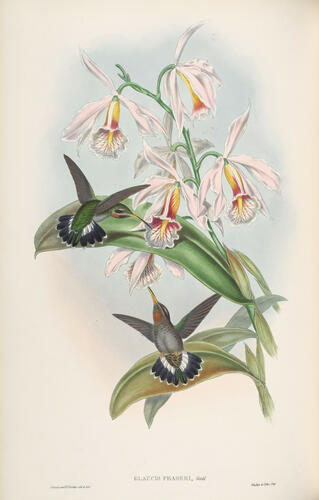
John Gould (1804-81)
A Monograph of the Trochilidae, or family of humming-birds ; v. 1 / John Gould 1861
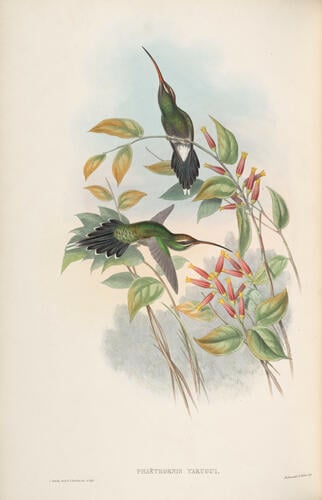
John Gould (1804-81)
A Monograph of the Trochilidae, or family of humming-birds ; v. 1 / John Gould 1861
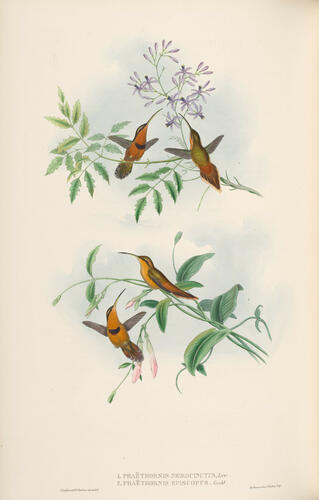
John Gould (1804-81)
A Monograph of the Trochilidae, or family of humming-birds ; v. 1 / John Gould 1861
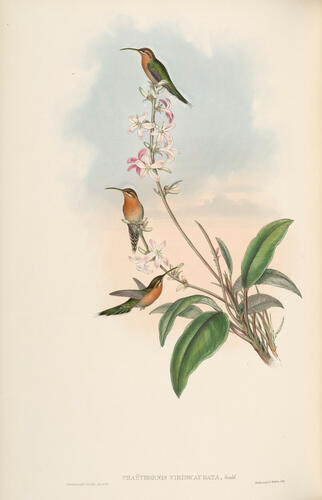
John Gould (1804-81)
A Monograph of the Trochilidae, or family of humming-birds ; v. 1 / John Gould 1861

John Gould (1804-81)
A Monograph of the Trochilidae, or family of humming-birds ; v. 1 / John Gould 1861
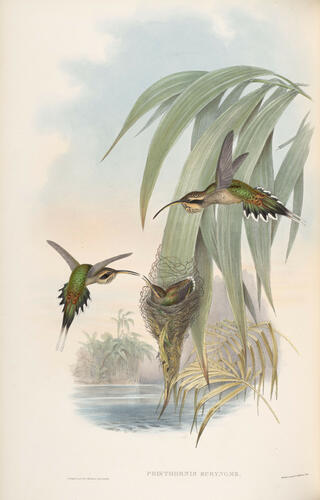
John Gould (1804-81)
A Monograph of the Trochilidae, or family of humming-birds ; v. 1 / John Gould 1861
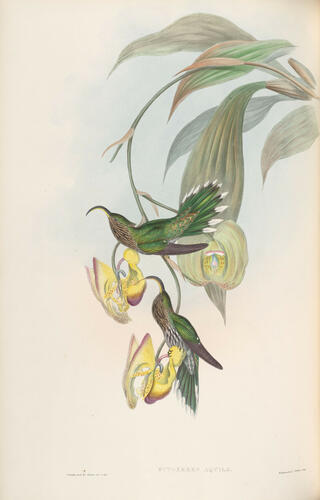
John Gould (1804-81)
A Monograph of the Trochilidae, or family of humming-birds ; v. 1 / John Gould 1861







-
John Gould was born in Lyme Regis on the Dorset coast in 1804 but was brought up in Surrey and later Windsor, where his father was one of the gardeners at the castle. The young Gould taught himself taxidermy from an early age and soon established a skill for the craft. Following a brief 18-month stint as gardener at Ripley Hall in Yorkshire, in 1824, he moved to London to establish a shop in the city.
The taxidermy enterprise was a successful one and Gould counted important public figures, including George IV (for whom he stuffed a pet giraffe in 1826), among his clients. In 1828, he won a competition to become taxidermist at the museum of the Zoological Society of London and eventually became curator where he developed connections with some of the most prominent naturalists of the day and received specimens from around the world to preserve and prepare for display. He was also noted for his own knowledge of ornithology and in 1836 assisted Charles Darwin in understanding the specimens collected from the Beagle voyage to the Galapagos, demonstrating that the birds collected were not different species as Darwin initially thought, but varieties of the same species, thus inspiring his revolutionary theory of natural selection.
Gould began to publish fine ornithological volumes from 1830. They are among the most famous and important 'bird-books' of the nineteenth century and the volumes in the Royal Library were subscribed to by Prince Albert and Queen Victoria.
Gould's passion was for hummingbirds. Though not seeing one alive until a specially-arranged trip to the United States in 1857 specifically for that purpose, he collected over 1,500 different birds from across 300 species, going so far as to display them to the public at the Zoological Gardens in Regent's Park during the Great Exhibition of 1851. On visitng the collection on 10 June 1851, Queen Victoria wrote in her Journal "It is the most beautiful & complete collection ever seen, & it is impossible to imagine anything so lovely as these little Humming Birds, their variety, & the extraordinary brilliancy of their colours."
Between 1849 and 1861, Gould published his most beautiful work, An Introduction to the Trochilidae or Humming-Birds, containing finely-painted illustrations of these tiny birds based upon the stuffed specimens found in his collection. The major achievement of Humming-Birds is the inclusion of gold leaf under the colouring in order to replicate the iridescence of the animals' plumage. The practice was not new, naturalists painting watercolour over gold leaf to show iridescence in feathers and in the scales of fish (see for example, RCIN 1057038) since the beginning of the century. Gould learned the technique from correspondence with the American ornithologist William Lloyd Baily (1828-61). However, Gould's innovation, employed by Henry Richter, who painted many of the birds, was the use of oils and varnish instead of watercolours to produce a brilliancy never before seen on the page. -
Creator(s)
(publisher)(binder)